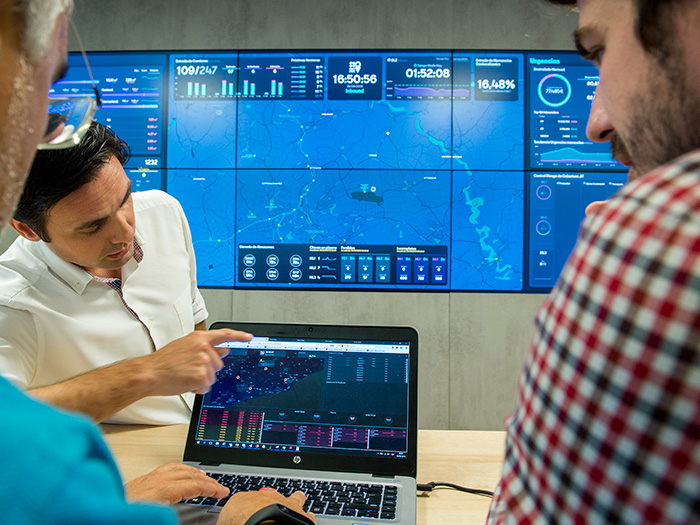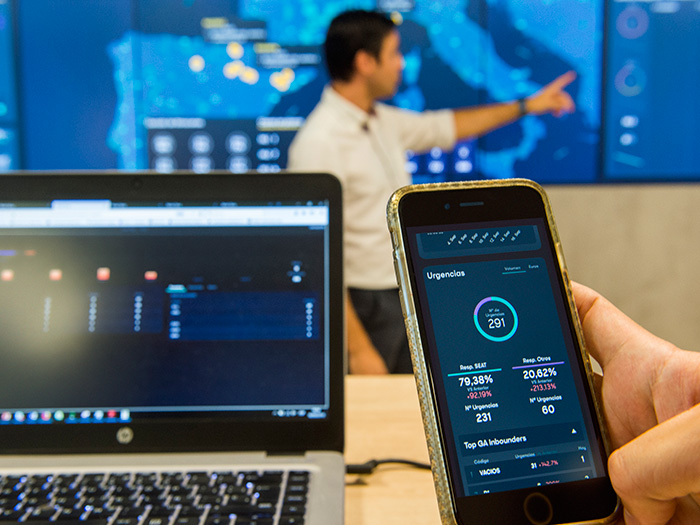How do you manage 16 million parts daily?
The SEAT Control Tower manages the location of each of the parts that go into making a car, boosting efficiency and preventing problems.
A videowall divided into different screens displaying constantly updated numbers, graphs, maps with itineraries, codes and other data - it looks like the control tower at an airport, but it isn’t. It’s the SEAT Control Tower in its Logistics Centre, a cutting-edge system that transmits in real time all the data linked to the 16 million parts needed every day to make around 2,300 cars.
In just 26 weeks, a groundbreaking project took shape. It uses an app to monitor the exact location of each of the parts at any time, ensuring that the transit of supplies can be optimised in connection with production needs.
From hours to seconds

“This will be the first time that SEAT will have real-time information on the flow of material, transit operation alerts and production material consumption. Information that used to take hours and several phone calls to obtain will now be updated in seconds,” says the director of the project, David Castilla.
A car is a giant puzzle where every piece is essential, so it’s just as vital to know where each one is and whether it will arrive in time for the production line.
Digital transformation

“We strive to monitor everything possible, from supplier stocks to production line events, transportation and logistics centres”, says David Castilla. In addition, this data forms the basis for using predictive tools to solve incidents before they occur.
“This project shows the capacity of the logistics and production team in the ongoing digital transformation of the brand. It has taken a great effort, but we can say that we've made a huge leap that is going to benefit our customers, as they will have access to all the essential information about their vehicle”, says SEAT Vice-president for Production and Logistics Dr. Christian Vollmer. “We can now successfully anticipate production needs well in advance so we can inform customers on the delivery date,” concludes Castilla.
Greater efficiency, less CO2

The environment also stands to benefit, as the project will improve material transport itineraries by offering more efficient routes through an app that gives the geolocation of truck drivers, enabling them to interact in real time. The same app features a cutting-edge system that predicts the estimated time of arrival and will, in future stages, also use predictive weather tools to offer alternative and more efficient routes.
This app has earned the team a spot on the shortlist for the SEAT Innovation Day, which recognises the company’s most innovative, employee-driven projects.
Source: SEAT S.A.
